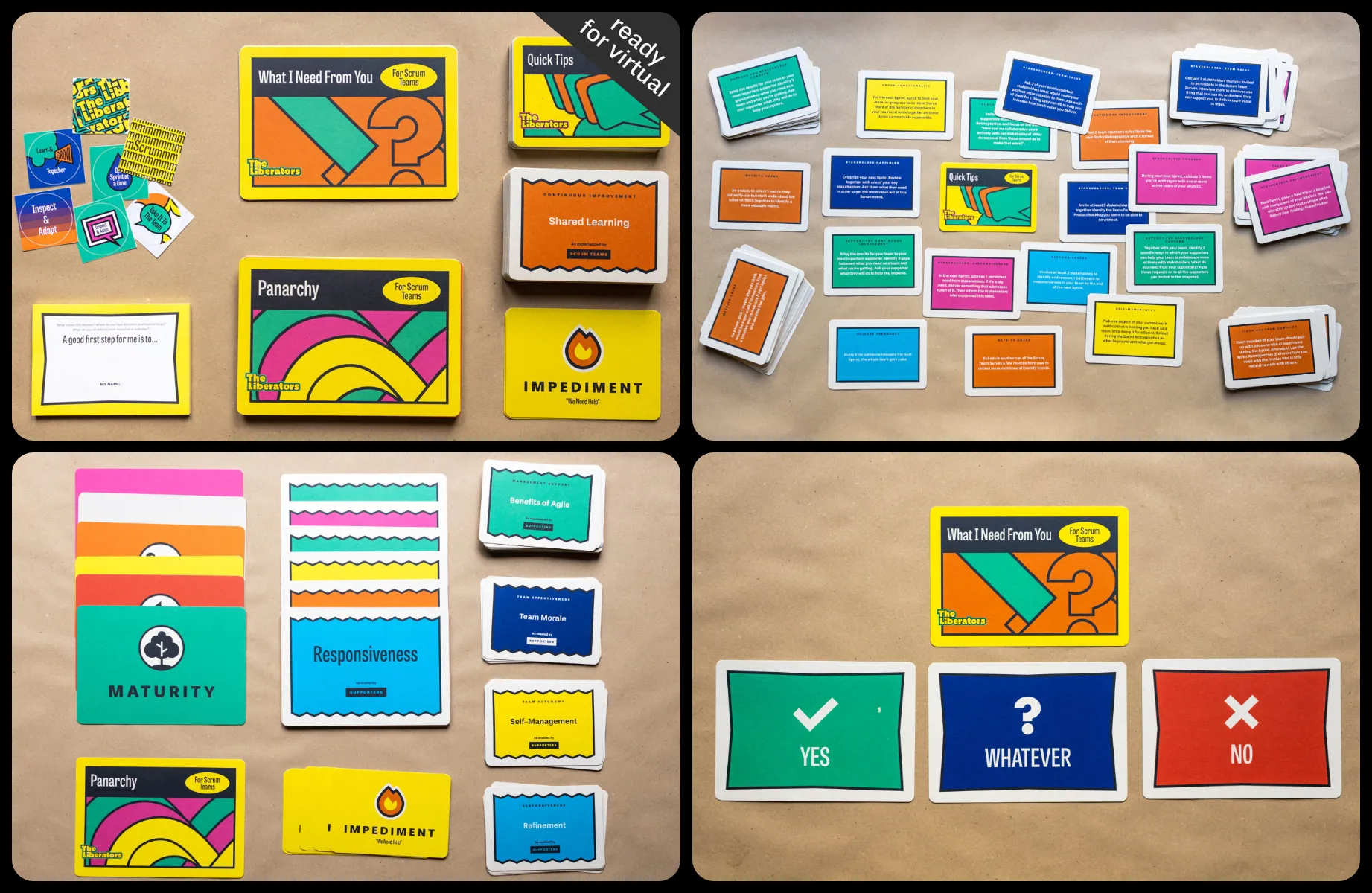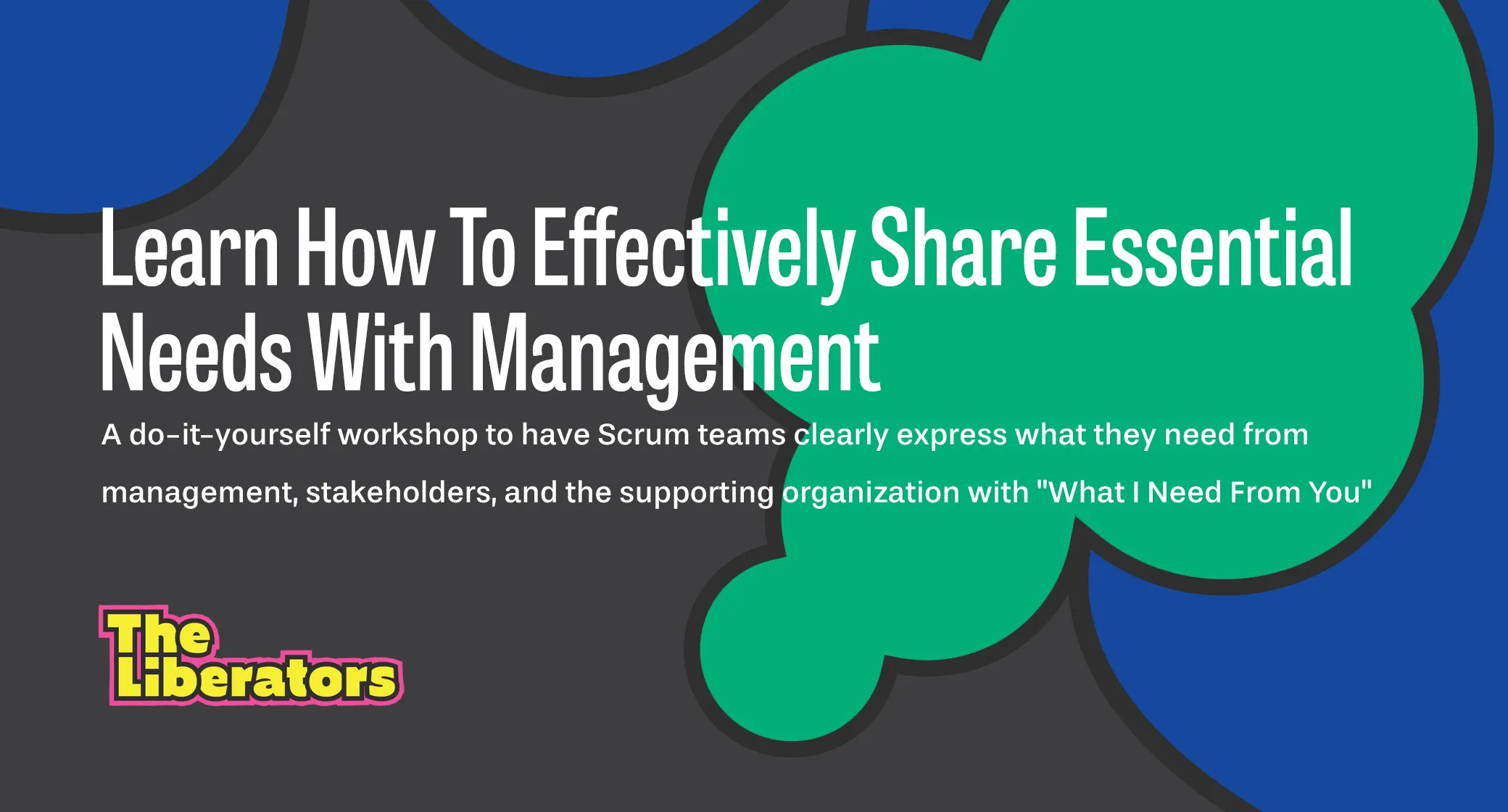
This article is also available as a free PDF on our webshop. It’s a nicely styled paper and allows you to easily share it with others. You can download the PDF here.
In some organizations, Scrum is implemented in a top-down fashion by management. In other organizations, teams start experimenting with Scrum and it moves up into the organization. Or it is a mix of both.
In both cases, teams need a lot of support from their environment to make it work. For example, from management, stakeholders, and other departments like HR, sales, or finance.
Many of the challenges that make it hard to work empirically can’t be solved by Scrum Teams themselves. For example, the organization uses a budgeting system that forces teams to make unrealistic forecasts. Or the sales department makes promises to customers that teams can’t live up to. Or management keeps reshuffling team composition, which results in stress, loss of productivity, and frustration.
While this harms productivity and the ability of teams to work empirically, it isn’t done on purpose. Often management, stakeholders, and supporting departments aren’t aware of the functional needs of Scrum teams.
The purpose of this do-it-yourself workshop is to explore essential needs and to give both the teams and their environment the to make clear requests and receive clear answers from them.
Give this workshop a try, and let us know the results.
How to prepare?
Group Size
This string of Liberating Structures is feasible from 8 participants and onward, and takes about 90–120 minutes, depending on group size.
Intended Audience
We designed this workshop for one or more Scrum teams and including the managers that shape their immediate environment. In large organizations, this likely includes people from middle management positions; team managers, department managers, and HR managers. But in smaller organizations, we highly recommend including top-level management too. If you’re up for it, you can certainly include more people from the environment of Scrum teams.
Virtual Delivery
Liberating Structures work well virtually. Here too, they allow you to unleash and involve everyone. What is exceptionally important, however, is that you have the right tools. Because Liberating Structures are fundamentally about breaking down large-group interactions into smaller groups, you need tools that allow you to create subchannels or breakout rooms easily.
Material
The product kit “Unleash Scrum In Your Organization” includes virtual and physical material to run this DIY workshop. It offers material for the Liberating Structure “What I Need From You”, and many other exercises as well.
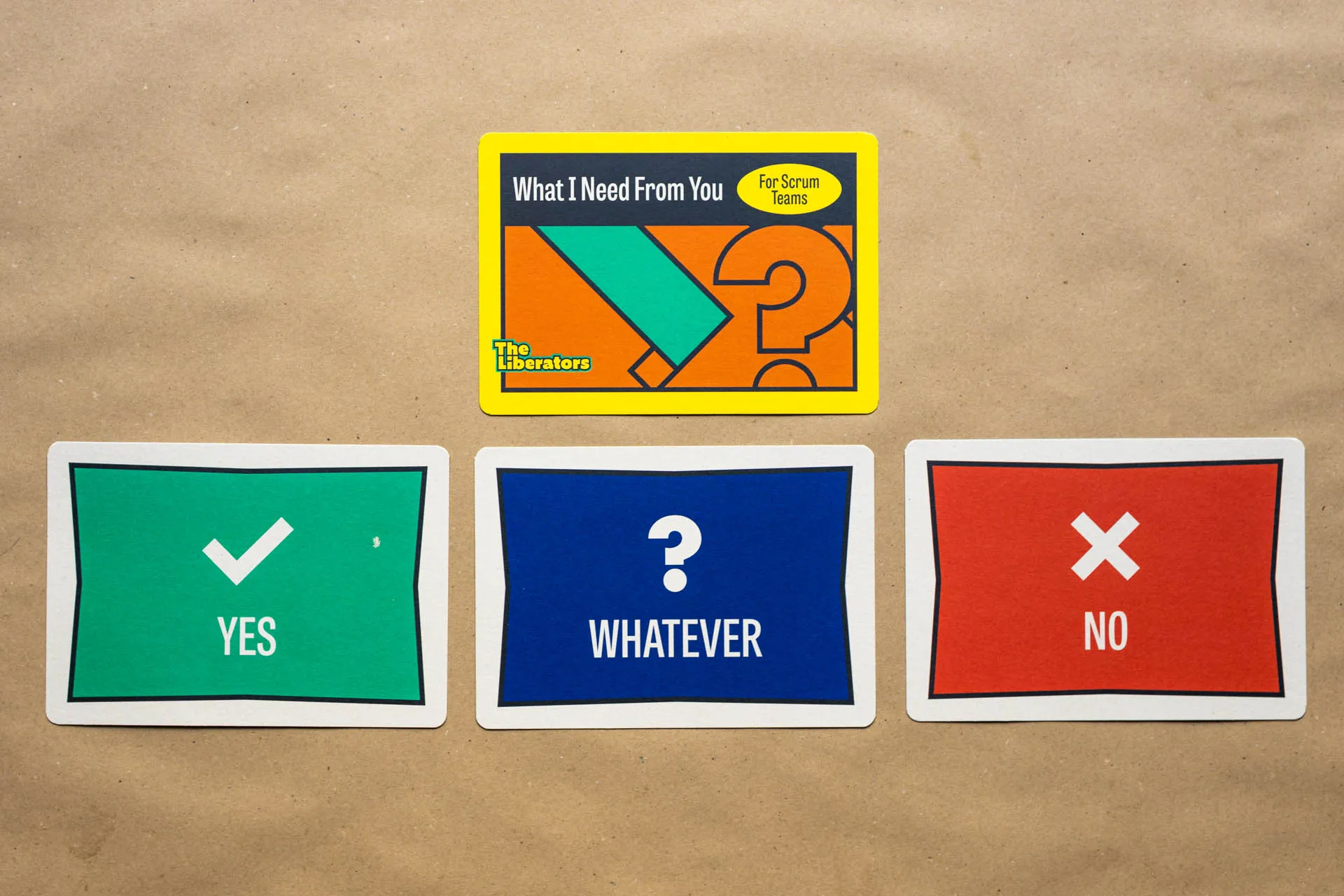
The “WINFY cards” you receive as part of the product kit “Unleash Scrum In Your Organization”
Step 1 — Opening
Start at the scheduled time. People who drop in later can jump in then. We always start our gatherings by simply saying “Hi!”, followed by our name. We then explain the purpose and start with the first structure. Superfast!
Step 2 — Share Success Stories With Appreciative Interviews
We start this workshop with the Liberating Structure Appreciative Interviews. It is a great way to identify what drives success and triggers insights for positive change by uncovering hidden success stories. It brings a positive mindset, makes personal connections, and puts people in a positive frame of mind. This is a great way to warm up for the next step, “What I Need From You”, which puts teams and their environment on the spot and can surface conflicts.
The purpose of Appreciative Interviews is to bring all the success factors to the surface. What are the success stories this group has experienced together? For example, a stakeholder may have offered the Scrum team an alternative solution to a problem they faced. Or the Product Owner provided a clear Product Goal to help the team focus and align their work. Or management helped to remove a nagging impediment. In these success stories lie enablers for more success, and it is good to bring them out purposefully.
Invitation
“In pairs, share a story of a time when this team, or this group of people, was able to successfully deliver value to its stakeholders? What happened? What made it possible? How did you contribute?”
Steps
- (2 min) Explain the sequence of steps upfront so that people know they will be sharing a story, listening to another story, and then re-telling the story they listened to.
- (2 min) Give participants a few minutes to silently bring back into memory a success story from their past, or at least the start of it.
- (8 min) Invite pairs into their own breakouts. In turn (4 min each), people interview each other about the success story of the other while paying attention to what made the success possible. The interviewer only asks questions (no advice, suggestions, etc.).
- (12 min) Invite pairs to join another pair in new breakouts. Everyone retells the story of the person they interviewed. The other three participants listen for patterns in conditions/assets that supported the success. Invite groups to capture the most salient factors in your virtual whiteboard.
- (4 min) When everyone is back in the main channel, collect insights from the group. Ask people to share some examples of what created the insights for them. The purpose here is not to collect everything, but mostly to spread ideas around. So don’t let this go on and on.
- (4 min) Ask: “What was made possible by sharing our stories in this manner?”. Invite people to silently reflect on this individually (1 minute) and then together.
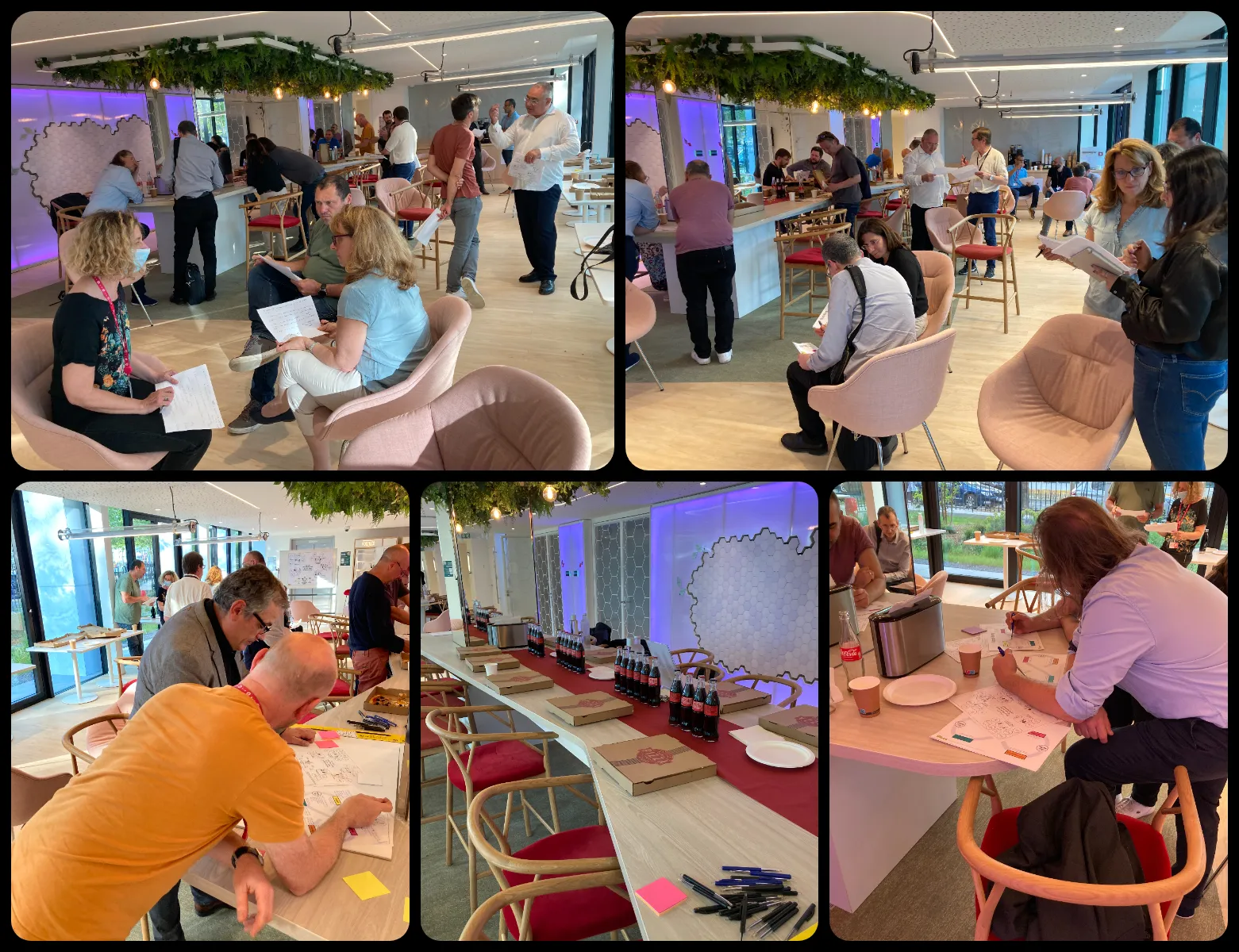
Appreciative Interviews during a meetup we hosted for the French local user group.
Step 3 — Make Clear Requests For Help With “What I Need From You”
With Appreciative Interviews, you helped the group identify the success factors and successful moments they’ve experienced as a group. But it also brought back good memories and allowed people to reminisce and build safety.
Now it is time to explore what everyone in the room needs from each other to be more successful and leverage the success factors even more strongly. What do the Scrum teams need from management, stakeholders, and the various functional departments? And what do they, in turn, need from the Scrum teams?
The Liberating Structure “What I Need From You” is a great way to find clear answers to these questions. You may find that interactions in this structure are very direct and no-nonsense. WINFY is designed as an antidote to the diffusion of accountability that is often prevalent in organizations and makes it hard to be successful. Unclear requests for help are often met with equally unclear commitments.
Invitation
“What do you need from others in this room to be even more successful in working together as a group? How can we strengthen existing success factors? What impediments do we need to remove?”
Steps
- (2 min) Ask everyone to first individually write down one or more clear functional requests they have to other groups in this room. You can give some examples, like “as a Scrum team, we need management to stop changing our composition without our approval” or “as management, we need the Scrum teams to tell us openly what is impeding their work”.
- (10 min) Invite people from the same functional groups (e.g. individual Scrum teams, management, HR) to gather. Invite them to share their ideas and write down between 3 and 5 clear functional requests they have of specific functional groups in this room (“What I need from [group], is ….”). If you do this virtually, move each functional group into a breakout.
- (1 min) Ask each functional group to designate one spokesperson and gather in the middle of the room. If you’re doing this virtually, everyone else can turn off their microphone and camera.
- (10 min) One by one, each spokesperson addresses the spokesperson from another functional group they have a request for and announces their request. For example: “From management, we need the learning budget to be doubled” or “From the Scrum team, we need one person who is willing to share these findings with higher management”. When a need is addressed to a group, its spokesperson takes notes but doesn’t answer. Block discussions.
- (5 min) When every request has been made, the spokespersons return to their groups and discuss their answers to each request. Three responses are possible: “Yes”, “No”, or “Whatever” (We don’t understand your request)”.
- (10 min) The spokespersons gather in the circle again. One by one, each of them repeats the requests that were made to them and their answer. Again, there is no discussion and no elaboration. If the answer was “No”, the group asking for it can trust that their request won’t happen. If it was “Yes”, then the group asking it can be certain that it will happen. If the response was “Whatever”, the request was too unclear to be performed.
Our findings
- Depending on the situation you can do additional rounds of making requests and giving answers. The goal is to make (painfully) clear how crucial it is to be specific when asking for help, as unclear requests and unclear commitments are often a sign of Zombie Scrum. That’s why we stop after one round. Do another round when you are certain that not being able to ask new requests causes more harm than the learning of not being able to ask again.
- Some tension during this experiment is natural as groups express clear requests and (finally) get clear answers. Recognize and accept it when it happens. Encourage participants to continue communicating their needs outside of this gathering using the same format. If a request was not understood or denied, try asking differently.
- If you see members of a group complaining about and blaming other people, ask them what it is they need specifically and whether they have communicated this need adequately.
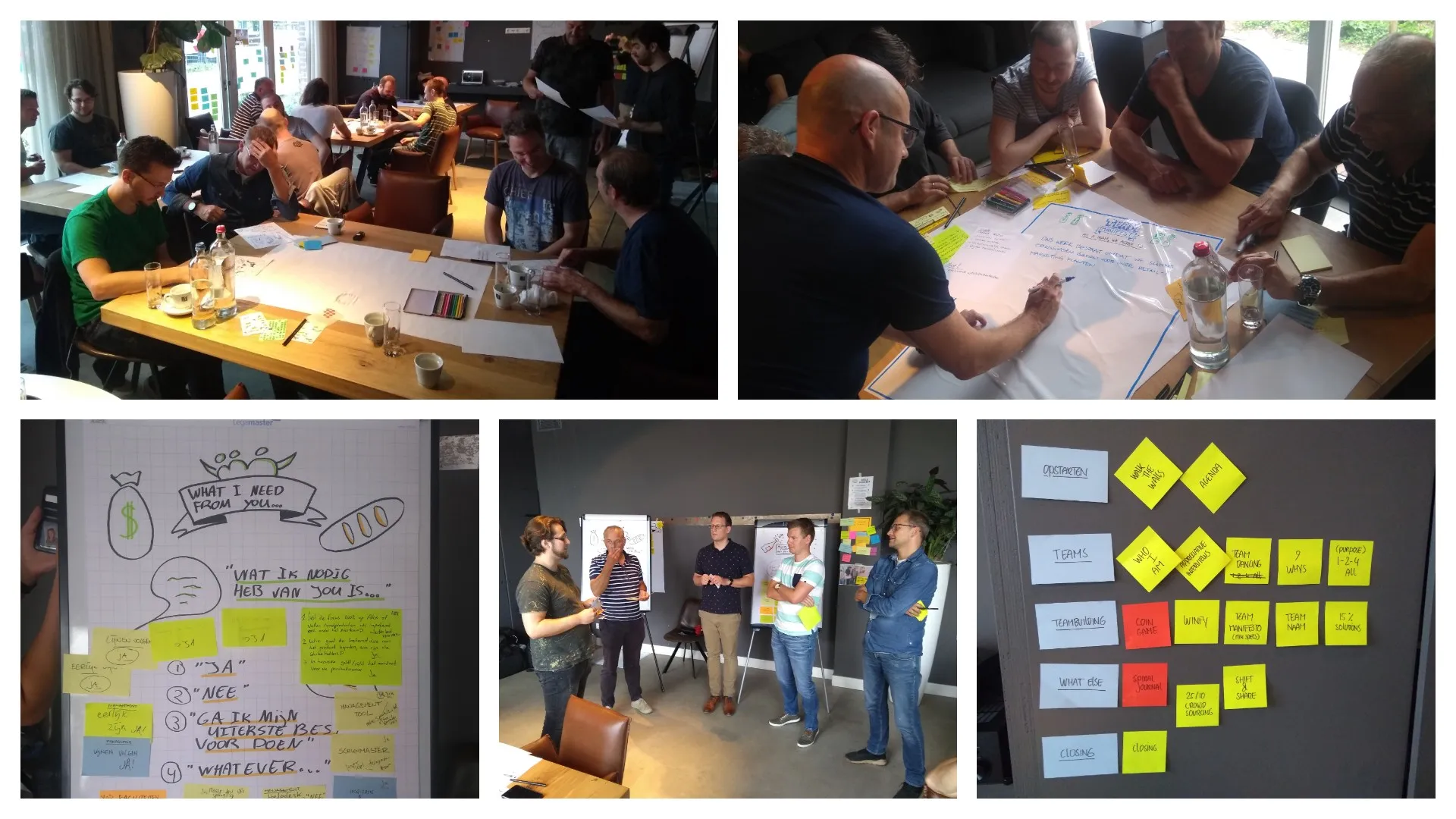
WINFY is designed as an antidote to the diffusion of accountability that is often prevalent in organizations and makes it hard to be successful. Unclear requests for help are often met with equally unclear commitments.
Step 4: Share Your Personal Path Forward With Drawing Together
So far, the group identified the factors that made them successful and clarified what they need from each other to be even more successful. The focus of WINFY is mostly on what groups need from each other. For example, what the team needs from Management. Or management needs from HR.
In this step, the focus is more personal. What are you, personally, going to do to make this group more successful? This is where the Liberating Structure Drawing Together comes into play. It is a structure that is about creativity and interpretation. It exists to reveal insights and paths forward through nonverbal expression. As part of this workshop, it helps the group to tap into a completely different way of thinking. A great closing exercise of a possibly intense session.
Invitation
“Now that we’ve identified the success criteria and essential needs, what does your personal journey forward look like with this group? How will you contribute to the success?”
Steps
- (5 min) Introduce the purpose of Drawing Together. Get participants comfortable with both drawing and the language by drawing the five symbols one-by-one. A triangle represents a goal. A rectangle represents support. A spiral represents change or transformation. A star person represents a relationship and the circle represents wholeness. With a virtual session, make sure to have these symbols available in a shared workspace.
- (7 min) Invite everyone to draw the first version of their personal path forward. Emphasize that drawing should take place in silence and without words or other symbols. Don’t explain the intention of this structure too much, trust the creativity of the participants.
- (10 min) Form pairs. Interpret each other’s drawings. The person who has done the drawing does not speak at the start. First, have the other person interpret the drawing. Switch after 5 minutes;
- (5 min) Debrief important patterns with the whole group. What are some obvious patterns you noticed?
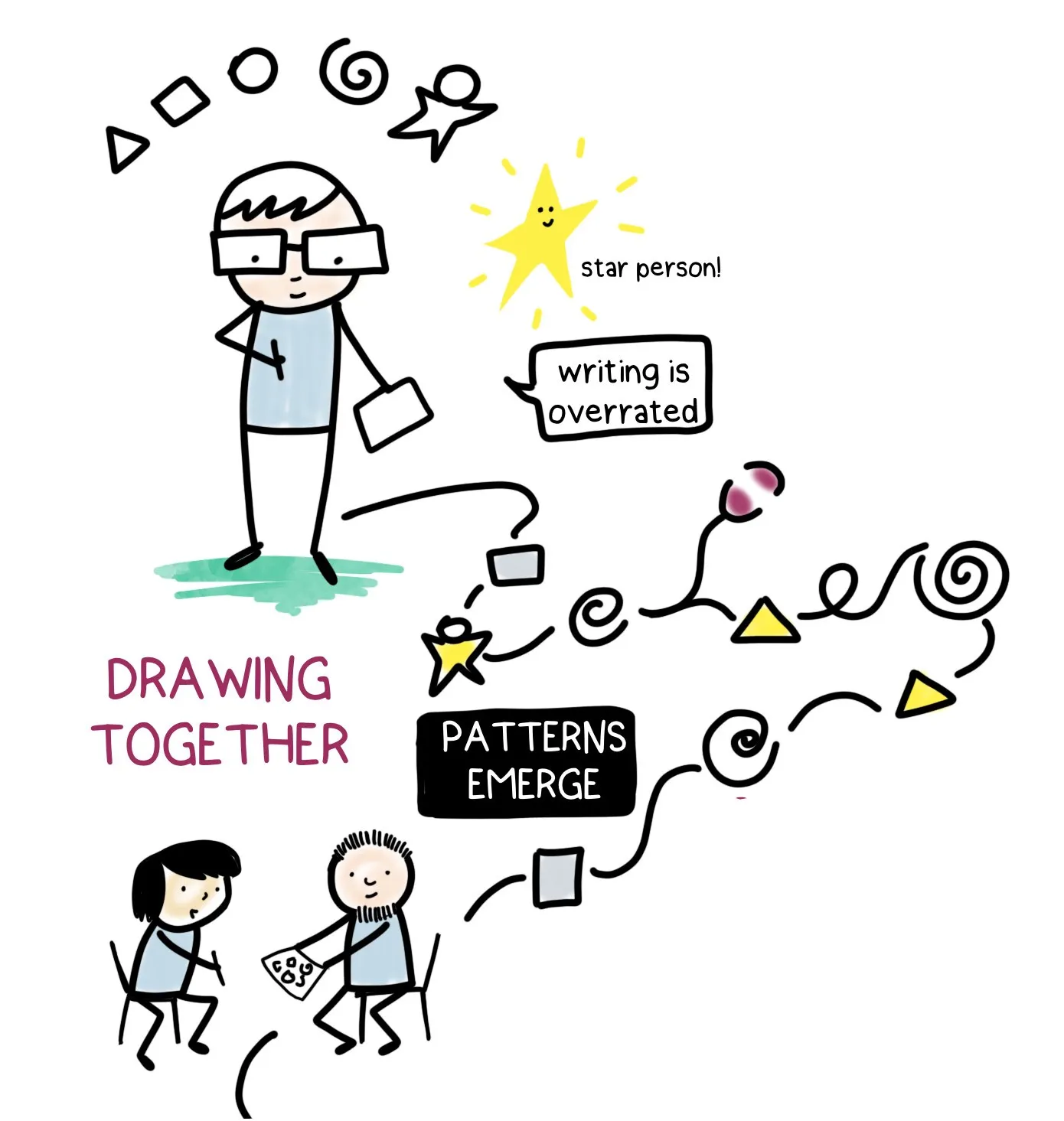
Step 5— Close the workshop
With this workshop, you gave the Scrum teams and their environment an important opportunity to reflect on what has made them successful so far. Then, you gave them an opportunity to express clear functional needs, and receive clear answers, on what can make them more successful in the future.
If you’ve got any questions, comments, or ideas: always feel free to reach out and share them with us.
Let’s learn and grow, together!
Increase your impact with our newest Product Kit
Scrum impacts the entire organization. To unlock your Scrum team’s superpowers, improvements are necessary within and especially around teams. We created this kit to help see the bigger picture. It’s filled with materials to diagnose Scrum in your organization and unleashes its potential with Scrum.
Although the product kit isn’t necessary material for this workshop, it can help to dig deeper into the results. The product kit contains the following materials:
- The exercise “Panarchy” to diagnose Scrum in your organization. You help Scrum teams, stakeholders, and supporters understand how their system works and find leverage points for improvement.
- The exercise “What I Need From You”. It helps Scrum teams to clearly express their needs and for others to clearly respond to those requests. The exercise includes a 50-sheet block of tearable ‘help request cards’.
- A card deck with 102 Quick Tips to improve your Scrum team. We categorized them into the factors you also find in the Scrum Team Survey.
- 5 Impediment cards. Impediments are problems the team can’t resolve themselves. Use these 5 impediment cards to make visible where you’re stuck and need support from others to improve the situation.
- 2 large A0 posters: “Factors That Determine Scrum Team Effectiveness” AND “What Makes Scrum Teams Effective?”
- A 50-sheet block of tearable 15% Solution-cards. Ready to be filled out by members of your team.
- A facilitation guide. You receive a 16-page PDF that describes how to use the included exercises.
